Entering the Japanese rental market can be overwhelming. This is especially true for apartments in Tokyo. It feels like facing a secret language of numbers and letters. This guide will clearly explain the essential apartment size meaning Japan. Do you know the critical difference between a 1K and a 1LDK? Our definitive guide deciphers this crucial housing code, providing the essential blueprint you need to master this system. Unlock the true size and functionality of any listing to secure your ideal Japan Tokyo apartment rent. With this expert knowledge, partnering with AREALTY becomes the final, smooth step in your successful move.
What Defines a Japanese Home?
Understanding the fundamental classification of rental properties in Japan is crucial. The terminology dictates the construction quality. It also affects potential soundproofing and ultimately the rent price.
Categorizing Housing by Construction and Quality
Japanese properties are broadly classified based on structure and perceived quality:
- Apāto (- Apartment): This term generally refers to low-rise rental properties, typically two stories or fewer. They are primarily constructed from lightweight materials like wood (Mokuzō) or light steel frames.
- Pros: They are the most budget-friendly choice, often resulting in lower overall Japan Tokyo apartment rent.
- Cons: They are older, smaller, and offer poorer sound insulation and lower seismic resistance. Tenants should expect a higher risk of noise disturbances.
- Mansion: This term denotes larger, multi-story buildings, usually three stories or taller. They are constructed using reinforced concrete (RC), steel-framed concrete (SRC), or heavyweight steel frames (S).
- Pros: Manshon units offer superior earthquake resistance, better soundproofing, and typically include modern amenities and enhanced security features like Autolock.
- Cons: They command a significantly higher rent premium and higher monthly maintenance fees.
- Mokuzō ( Wooden Structure): Indicates the construction material. This material offers poor sound insulation.
- RC (Reinforced Concrete) & SRC (Steel Reinforced Concrete): Indicates concrete structures, offering excellent soundproofing, superior earthquake resistance, and higher rent.
Architectural Style and Room Type
Listings also distinguish between the style of the private rooms:
- Yō-shitsu: Western-style rooms. These feature non-tatami flooring (wood laminate, vinyl) and are designed to accommodate Western furniture (beds, sofas, desks). The majority of modern apartments in Tokyo use this style.
- Wa-shitsu: Traditional Japanese-style rooms. These feature a tatami mat flooring and may have sliding doors (fusuma). These rooms need specific care and maintenance.
- Kōei Jūtaku or Shi-ei Jūtaku: Public Housing. Refers to housing provided or subsidized by the local or municipal government (e.g., Shi – City). These are typically extremely affordable but have stringent application requirements, income caps, and long waiting lists.
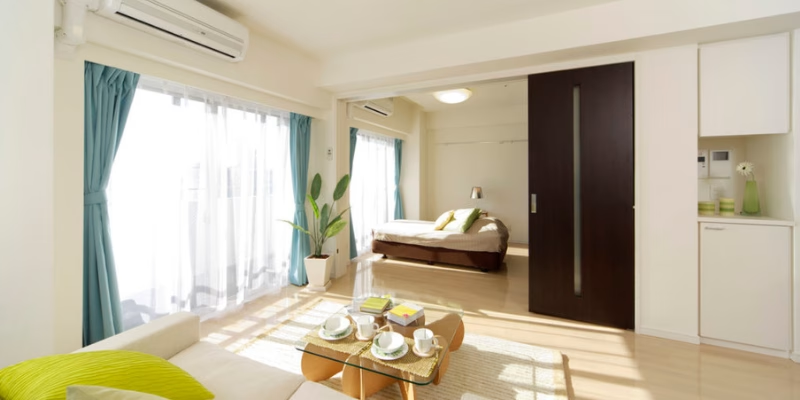
The Japanese Measurement and Layout System
The Japanese rental system uses a highly specific alphanumeric code. It is merged with traditional measurement units. This combination is the heart of the Apartment size meaning Japan.
Mastering Traditional Measurements: Jō (Tatami) and Tsubo
Individual room sizes are almost universally described using the traditional unit of Jō (帖 or 畳). This unit is derived from the size of one tatami mat. Room sizes are not solely measured in square meters (m2).
- 1 Jō must be equivalent to 1.62 square meters (m2) or more in commercial listings.
- A common bedroom size is 6 Jō (6×1.62m2 = 9.72 m2 minimum).
| Room Size (Jō) | Minimum Area (m2) | Functional Description |
| 4.5 Jō | 7.29 m2 | Small bedroom or minimal DK space. |
| 8 Jō | 12.96 m2 | Large bedroom or minimum size for an LDK. |
Xuất sang Trang tính
- Tsubo (坪): A unit used for measuring the total area of land or large properties. 1 Tsubo is approximately 3.3 m2 (or two tatami mats).
Decoding the Alphanumeric Layout Code
The number indicates the separate bedrooms. The letters define the common areas and must meet minimum size requirements:
| Code | Layout Type | Statutory Minimum Size | Functional Note |
| 1R | One Room (Studio) | N/A (Integrated Kitchen) | Kitchen area is integrated with the main room. |
| 1K | 1 Bed and Kitchen | Kitchen separated by a solid door. | Kitchen is separated from the bedroom (good for odor control). |
| 1DK | 1 Bed and Dining Kitchen | DK area ≥ 4.5 Jō (7.43 m2). | Common area only large enough for a small dining set. |
| 1LDK | 1 Bed and Living Dining Kitchen | LDK area ≥ 8 Jō (13.24 m2). | Large common area for distinct living and dining zones. |
Technical Specifications and Essential Tenant Requirements
These terms address crucial factors like monthly costs, comfort, desired modern conveniences, and layout practicalities. Understanding these technical features is non-negotiable for selecting the right apartment, as they form the complete picture of apartment size meaning Japan.
Utility and Infrastructure Terminology
Monthly utility expenses can vary significantly based on the infrastructure of your apartment.
- City Gas: This is the natural gas, supplied via underground pipes common in dense urban centers. It is generally the most cost-effective and safest option for cooking and heating.
- LP Gas (Liquefied Petroleum Gas): This gas is supplied via pressurized tanks attached to the building. This is a common setup in older buildings and suburban properties. It is universally known to be significantly more expensive than City Gas, making it a critical factor in budget planning.
- Separated Toilet and Bath: This is a highly desired layout. The toilet is in a completely separate room from the main bathing and shower unit. This separation greatly enhances convenience and hygiene.
- Unit Bath: This term describes the bathroom’s prefabricated construction method. The components are factory-made and assembled on-site. Crucially, the Unit Bath designation does not indicate whether the toilet is separate or integrated. Always confirm if it is a “Separated Toilet and Bath.”
- Autolock: This is a crucial security feature, typically found in modern Manshon, where the main entrance door automatically locks. It requires a key or interphone access for entry, significantly increasing the safety of the building.
- Internet Access Terminology: This describes the readiness of the building for internet services.
- Internet Ready: The main communication line has been pulled to the common area of the building. The tenant is responsible for signing a contract with a provider. They must pay for the line to be pulled into their room.
- Internet Complete: The line is fully installed and active. The cost often include in the rent or management fee. This allows the tenant to use the service immediately upon moving in.
Practical Layout Features
Specific layout details can dramatically improve the functionality and comfort of your living space, especially in shared or smaller units. Understanding these nuances is integral to grasping the full apartment size meaning Japan.
- Separated Layout: This configuration dictates that each private room has its own direct entrance. This entrance leads from the main common area (like the Living/Dining/Kitchen). This ensures maximum privacy for occupants, making it ideal for flat-sharing or multi-person families.
- Walk-in Closet (WIC): This feature refers to a dedicated, enclosed storage space large enough for a person to step inside. It offers superior storage capacity and better organization for clothing and belongings.
- System Kitchen: This describes a modern, integrated kitchen setup. The design seamlessly connects the sink, built-in stovetop, countertop, and storage units. This design is highly desirable due to its sleek aesthetic and ease of cleaning.
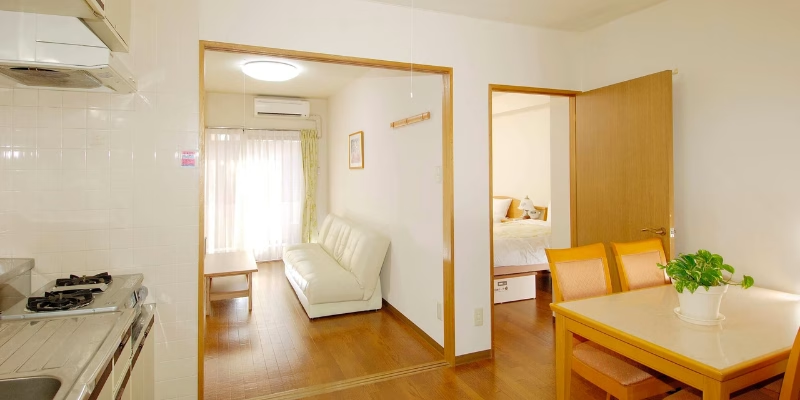
Deciphering Initial Costs
The process of securing an apartment for rent Japan requires navigating complex financial terminology and preparing for significant upfront payments.
The Critical Initial Cost Components
| Term (Japanese) | Meaning | Refundable | Typical Cost (Months’ Rent) | Key Functionality |
| 敷金 (Shikikin) | Security Deposit | Partially/Fully Refundable | 1–2 months’ rent | Held to cover damage, excessive cleaning, or unpaid rent upon move-out. |
| 礼金 (Reikin) | Key Money | Non-Refundable | 1–2 months’ rent | A traditional “thank you” gift to the landlord. |
| 仲介手数料 (Chūkai Tesūryō) | Agency Commission Fee | Non-Refundable | Up to 1 month’s rent + tax | Fee paid to the real estate agent for contract facilitation. |
| 保証会社費用 (Hoshōgaisha Hiyō) | Guarantor Company Fee | Non-Refundable | 50%–100% of 1 month’s rent | Fee for the mandatory professional guarantor service, replacing or supplementing a personal guarantor. |
| 前家賃 (Mae Yachin) | Advance Rent | N/A (Rent Payment) | 1–2 months’ rent | Payment of the first full month’s rent plus a prorated amount for the move-in month. |
- Specific Example of Initial Costs: A desirable 1LDK in Tokyo costs ¥150,000 per month. The total initial outlay would look approximately like this. It totals over 4.5 times the monthly rent:
- Security Deposit (1 month): ¥150,000
- Key Money (1 month): ¥150,000
- Advance Rent (1 month): ¥150,000
- Agency Fee (1 month + tax): ¥165,000
- Guarantor Fee (50% of rent): ¥75,000
- Fire Insurance/Lock Change/Other (estimate): ¥50,000
- Total Initial Cost (Approximate): ¥740,000
*This rigorous financial structure underscores the necessity of clear, expert consultation. To start your journey with clear cost expectations, and browse our comprehensive list of 1LDK apartments available in Tokyo now. *
The AREALTY Advantage: Partnering for a Seamless Move
Securing the ideal apartment for rent Japan requires more than understanding the size codes and technical terms. It demands expert guidance through the complex application process. It also requires understanding the initial fee structure and cultural differences. Consequently, Arealty specializes in providing comprehensive, transparent real estate services specifically tailored for the international community.We ensure a smooth, efficient, and stress-free rental experience. This encompasses everything from the initial search for apartments in Japan through to lease signing. It also includes key handover.
We commit to demystifying the entire process. We provide clear and accurate information on everything from guarantor requirements (or guarantee company use) to initial moving costs. This includes reikin (key money) and shikikin (deposit). Our extensive portfolio features quality listings across all major cities, including the most desirable apartments in Tokyo. We possess specialized knowledge to navigate properties that accept foreign residents. This expertise reduces application time and increases approval rates. Our bilingual agents expertly translate contract terms. They ensure that you fully comprehend the financial and legal obligations. This approach prevents unexpected expenses.
Contact Arealty today. Speak with a bilingual agent who can match your specific lifestyle with the perfect apartment. Moreover, we consider both your lifestyle and budget requirements, whether for a 1R, 1K, 1LDK, or larger apartment. Do not delay your Japanese housing success; partner with AREALTY for a seamless move.
Conclusion
Understanding the core terminology is essential. It ranges from the Apartment Size Meaning Japan layout codes (1R, 1K, 1LDK) to the traditional Jō measurements. This is the definitive first step toward a successful residency. This comprehensive knowledge empowers you to evaluate properties accurately, understand the differences in construction (Manshon vs. Apāto), and prepare for the necessary financial outlay (Shikikin, Reikin). By prioritizing the functional layout and technical specifics, you guarantee the apartment meets your daily needs. Proper preparation is crucial. The professional and expert support offered by Arealty transforms the complex Japanese rental journey into a streamlined success. This ensures your comfortable residence in Japan.

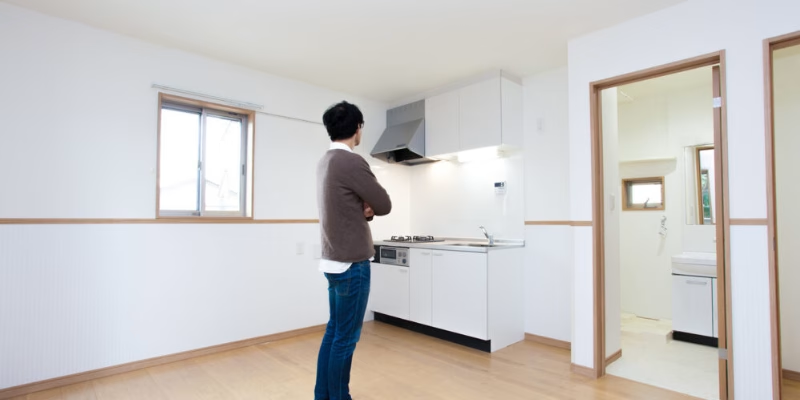

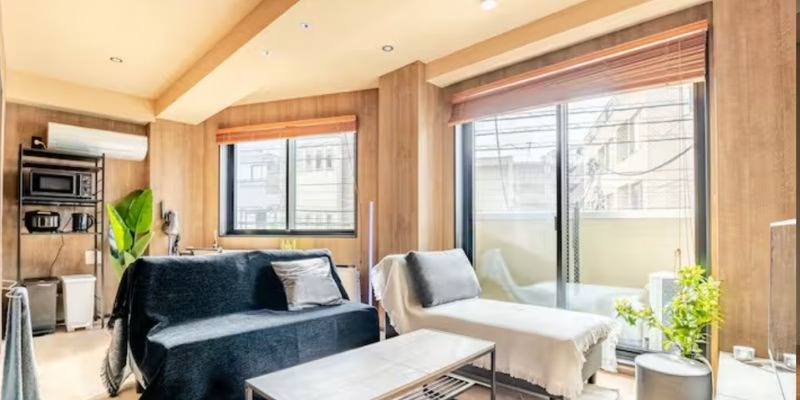
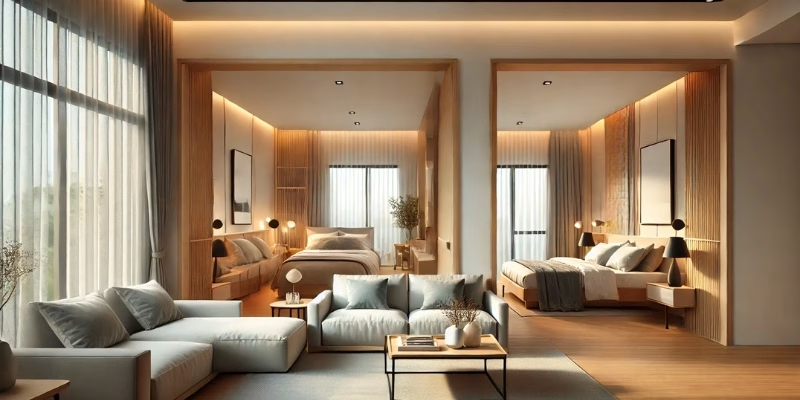
Leave a Reply